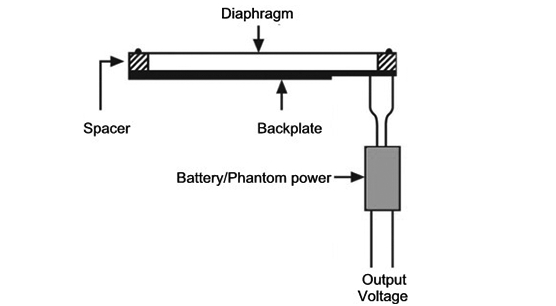How do Microphones work?
HOW DO MICROPHONES WORK?
Ok, so now you're ready to get started in the world of audio engineering, and you need to learn a few concepts... Someone politely asks you:
"Hey, would you mind grabbing some mics for the drumkit? Theres some dynamics for the snare and toms. I've got two condensers for the overheads, and can you bring the ribbon mic for me? I want to try that on the hats."
And you are stuck, not exactly sure what they meant.
You might know what a microphone is. You might even know the names of the different types.
But do you KNOW how microphones work?
Don't worry, I'm here to help, with a bit of an explanation for each type.
Overall:
Microphones. How do they work? All microphones work on a similar principle.
They convert acoustic energy - moving sound waves - into electrical energy.
The method that they use to change the electric energy into electrical energy is what differentiates them.
Let's start at the most common type of mic, the dynamic microphone:
Dynamic Microphones:
 |
| Pic courtesy of Shure.com |
All dynamic microphones essentially work like a speaker in reverse.
They have a thin, flexible diaphragm typically made of a lightweight material.
When sound waves hit this diaphragm they cause it to vibrate.
A small coil of wire is attached to the diaphragm, and this coil of wire is seated inside a magnet.
When the coil moves in the magnetic field, it creates an electrical current according to Faraday's Law of Induction.
This electrical signal is then transmitted from the microphone through a cable or wire to a mixing console, amplifier, or recording device.
Key Features and Benefits:
Dynamic microphones are generally more robust and durable compared to other types of microphones.
They can handle high sound pressure levels without distortion, making them ideal for live sound applications and recording loud instruments.
Unlike condenser microphones, dynamic microphones do not require an external power source (phantom power) to operate.
Condenser Microphones:
A condenser microphone works on a different principle compared to a dynamic microphone. It uses a capacitor (or condenser) to convert sound into an electrical signal.
Inside the microphone, there is a diaphragm, typically made of a very thin, flexible material like Mylar coated with gold or another conductive material.
This diaphragm is positioned very close to a backplate which has an electrical charge, creating a capacitor (a device that stores electrical energy).
When sound hits the diaphragm, it moves slightly towards and away from the charged backplate, creating a difference in capacitance, which is the electrical representation of the sound waves.
The electrical signal generated by the changing capacitance is usually very weak and needs to be amplified.
Condenser microphones typically include a built-in preamplifier to boost the signal to a usable level.
Key Features and Benefits:
Condenser microphones are known for their high sensitivity and accuracy in capturing sound, making them ideal for studio recording and capturing subtle nuances in vocals and instruments.
They generally have a wider frequency response compared to dynamic microphones, allowing them to capture a broader range of sound frequencies.
Condenser microphones require an external power source, known as phantom power, or 48v.
This 48v is typically supplied by a mixing console or an audio interface, or an internal battery.
Condenser microphones are versatile and can be used for a variety of applications, especially when a more transparent top end is needed.
Overall, condenser microphones are favoured in situations where detailed and accurate sound reproduction is crucial, especially when a transparent top end is needed.
Ribbon Microphones:
The core component of a ribbon microphone is a thin, corrugated strip of metal, usually aluminium, called the ribbon.
This ribbon is suspended between the poles of a strong magnet.
When sound waves hit the ribbon, they cause it to vibrate. Because the ribbon is very light and thin, it can respond quickly and accurately.
As the ribbon vibrates within the magnetic field, it cuts through the magnetic lines of force, inducing a voltage in the ribbon itself. This induced voltage is the electrical representation of the sound wave.
The voltage generated by the vibrating ribbon is quite low.
Therefore, the microphone typically includes a transformer to boost the output signal to a usable level.
Key Features and Benefits:
Figure-Eight Polar Pattern. Ribbon microphones naturally exhibit a figure-eight polar pattern, meaning they pick up sound equally from the front and back while rejecting sound from the sides.
This makes them ideal for situations where you want to capture sound from two opposite directions or reject ambient noise from the sides.
Ribbon microphones are known for their smooth and natural frequency response. They particularly excel in capturing the midrange frequencies. They often have a warm, vintage sound quality that is highly prized in recording studios.
The thin ribbon element is delicate and can be damaged by strong blasts of air (such as plosive sounds) or by applying phantom power incorrectly.
Modern ribbon microphones are more robust, but care should still be taken in handling and using them.
Hopefully this answers your questions on microphones and how they work?
Please leave a comment below and tell me your favourite microphone?





Comments
Post a Comment